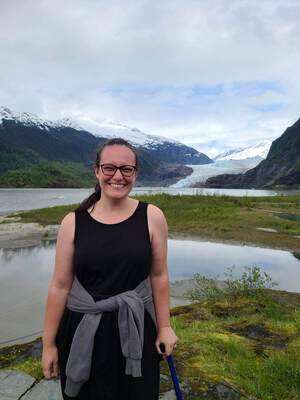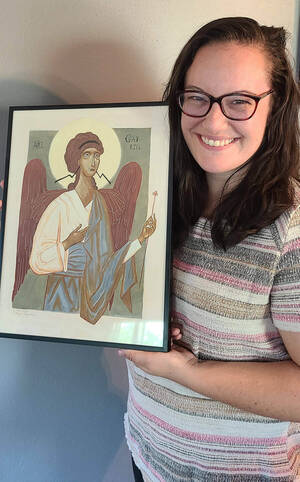In my experience, Catholics are obsessed with (at least) two things: death and Latin. So, it should come as no surprise that memento mori, a Latin phrase translating to “remember your death,” is a big deal for Catholics. “The world is not your home,” we are reminded. “You were made for a different place.” And that brings me to bucket lists.
I wrote my bucket list sometime between middle and high school. It included such gems as “Learn to sew a button” and “Shoot a bb gun.” And, like the list-motivated, anxious, death-conscious person that I was and still am, I worked hard on checking items off that list. Before the end of high school, I read every one of Shakespeare’s plays. (Unfortunately, I speed-read them one after another and now still can’t keep any of the plotlines straight.) I tried oysters, escargot, squid and caviar. (I liked none of them, but at least now I know from experience that I think oysters are gross and that purchasing a squid sandwich from a vending machine is a dubious decision at best.) I tried snowboarding. (I did not enjoy the actual act of snowboarding, but it was hilarious to try.) And much more.
Each of those items brings back the comforting, warm memory of someone I love — my mom helping me with the button, my speech teammate teasing me as she cleared the area for my introduction to the bb gun, the shock on my grandma’s face when I ordered the escargot, my best friend’s determination as she hunted down road-trip oysters in an unfamiliar grocery store that smelled of candles. Yet, in each of those memories also lies a sense of desperation, a quiet satisfaction or feeling of accomplishment that I had done one more thing before death. My life was one line item more complete. I was one task less unaccomplished before the inevitable.
I lived out memento mori, not as a mindset, but as a septic infection.

Between college and graduate school, I knocked a few other items off the list — notably, ziplining, seeing Venice and visiting the National Mustard Museum (not all in the same trip). My bucket list began to take a back seat to the thrilling adventures of young adult life. By that point, I had completed most of the life to-dos my teenage self had dreamed up and my drive to complete goals before death lessened as death became somehow predictable. Life became its own goal and death took a backseat. Perhaps part of this was the work I was doing: I was surrounded (and then, in grad school, further surrounded myself) by the grief of pregnancy loss. Reading and studying grief became a part of not only my spirituality but also my professional work; and I began to think the thought of the unwarrantedly comfortable: that I now spoke the same language as death.
Then COVID-19 hit.
It hit all of us, and then, a few months later, it specifically hit me. In the several weeks when I kept returning to the hospital for what seemed like heart attacks, in the moment I was told that I needed to make a plan in case I died, amidst the months stretched into years of tumult from a pandemic that killed or prompted the early deaths of between 17.8 and 31.1 million people, death spoke loudly. And I didn’t understand what it was saying.
When we realized that I wasn't imminently dying, that these cardiac events were debilitating but not deadly, I was left with the somehow similarly frightening prospect of living. I returned to my first attempt to understand death: my bucket list.
There were only a few items remaining: 1) see Niagara Falls; 2) see glaciers in Alaska; and 3) write an icon.
You don’t paint an icon; you write it. It’s a prayer, after all. And, like trips to Niagara Falls and Alaska, it’s expensive, which is part of why these three items were the remainders of my bucket list. (For those wondering, the National Mustard Museum is not far from my grandmother's house in Wisconsin, and admission is free.) But, that summer, Notre Dame offered an icon-writing workshop as a class, tuition covered by my status as a graduate student.
Thanks to a lot of encouragement from my husband and generous free babysitting provided by my sister, I immersed myself in an art form I had always loved but only from afar. In a two-week class splitting a calendar year that moved me from facing my own death to just living, I wrote an icon of the Archangel Gabriel, Bearer of Good News.
As 2021 and much of 2022 slipped and dragged through our fingers, society combatted the virus with vaccines, and I combatted my new disabilities with a wheelchair, medications and therapy. Alongside my long-awaited acceptance into the University of Michigan’s long COVID clinic, my husband and I decided we’d do it. We’d finish my bucket list.
I owed it to those who had died, to live, right?
By fall 2022, I had learned enough about my new body to know what I could and couldn’t do without sending myself to the emergency room. Armed with an overwhelming sense of survivor's guilt and a simultaneous electrifying chill that I had the chance to keep living, I set out for Niagara Falls. I spent an amazing weekend there with my husband, our 2-year-old and two dear friends. We sat in awe of the beauty and constant power gushing over the precipice into the vastness below. I felt so out of control, sitting at the top of the Falls. Not the bottom, where the water’s path forward was clear and the direction had meaning. The top. Where the water was thrown about and tossed over into the unknown. Maybe this was death, just a mysterious vastness we pour ourselves into, whether we want to or not. I cried at the top of the Falls. And then I crossed into Canada, surrounded myself with butterflies and ate donuts.
A few weeks after we got back, we booked a cruise to Alaska.
Who takes a cruise to Alaska with a toddler and three young adults crammed into one tiny room? We did, and I highly recommend it. We huddled together as we saw glaciers so enormous that they dwarfed our boat of 3,000 people, so alive you felt like you could breathe on them and they would somehow breathe back. Each day took my breath away in a way that reminded me that breathlessness could be the language of life, not just death.
As I sat with my best friend on the deck of the boat, admiring ice-capped mountains and sipping a coconut mojito that probably was more appropriate hundreds of miles south of the frozen tundra around us, a server came up and asked us why we were on the cruise.
“It’s the last item on my bucket list,” I said.
“Wait, the last one?” she asked. “How old are you?”
“Twenty-eight.”

We chatted for a few minutes, about cruises generally being the vacation of an older population. We talked about how many people on the ship had told us that this was the vacation their spouse had always wanted to do, and that they were finally doing it in that person’s memory, or about how the trip was in honor of a deceased friend. We talked about how much of a trip to Alaska is prompted by death.
I made a resolution. Having finished my bucket list, I will not write another — at least not for some time. It’s time for me to start marking my goals by life rather than by death, taking trips because I want to do them with those I love, right now, while we are all still alive.
Maybe the reason I’ve struggled to understand the language of memento mori is that it goes hand-in-hand with another: YOLO.
So, instead of a new bucket list, I’m putting together a list of things to do before I’m 40. Decades are such nice, round numbers, but making a list of things to do before I'm 30 gave me just over a year to complete it, and that seemed aggressive. So, 40 it is.
Maybe I’ll try to see half the remaining states I haven’t seen. Maybe I’ll finally become fluent in Danish. Maybe I’ll read everything written by Simone Weil or listen to every episode of Stuff You Should Know. I’m not sure what foods I should add to my list, but I want to become more adventurous not just in eating them, but also in cooking with them. Given the ability level of my body, anything similar to snowboarding is definitely out, so perhaps instead I'll drive a racecar around a track or take my electric bike across Missouri.
And these won’t be checklist items of a job sufficiently done before death arrives at my door. These will be beautiful colors added to the canvas on which I write my story in whatever space I have left, a bilingualism of both remembering my death and making memories of my life.
As they say, the world is my oyster. My beautiful, temporary oyster.
Except that I think oysters are gross.
Abby Jorgensen is an assistant professor of sociology and health care ethics at Saint Louis University, as well as a birthworker specializing in bereavement.